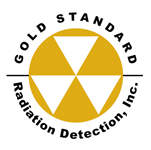GSTND is about Protecting What We Value.
Protecting what we value: GSTND will provide solutions to save lives in disasters; we are working to protect civilization and the US against events and technologies that have the potential to ‘rip apart the fabric of our society’. We are developing two key technologies to help.
The first technology will serve to provide timely information in the case of a disaster. We are enabling this by developing a ‘hardened’ communications network. This communications network is meant to work when the cell phones are down, when we don’t have electric power and the police and fire services are overwhelmed. The network will provide information under worst case conditions, such as after a nuclear event, EMP or other disaster. We call this the eVader network and our first device the eVader I.
The second way is with a technology that is fast, sensitive and safe for finding special nuclear materials (SNM), chemical agents and explosives and potentially bioagents. This technology can be fast, portable or large and fast enough to test every piece (100%) of baggage and or cargo transportainer being loaded or unloaded at ports without delaying transportation or shipping. We call this technology FindSNM, though more accurately it could called find bad stuff fast because in time we hope to find explosives, and chemical weapons as well as nuclear materials.
Who We Are
Dr. Mark Derzon, President, started Gold Standard in Albuquerque, New Mexico in 2018. Dr. Derzon was employed at Sandia National Laboratories in Albuquerque for 30 years. In the late 1990’s, he was chosen from a field of more than 80 candidates to be a charter member of Sandia’s Advanced Concepts Group (ACG). This was a think tank where the goal was to explore the future of National Security to help avoid situations that could destroy the fabric of society. This experience has guided his research interests since that time. While at Sandia his experience across many fields of research and interest placed him in the position of managing multiple research programs across multiple disciplines.
After retiring from Sandia National Laboratories in 2018, Dr. Derzon decided to pursue developing solutions for other national needs that have not yet been met by industry or current government programs. These include 1) development of technologies to improve survivability in the event of disasters and 2) as well as preventing them.
Dr. Derzon has broad experience in detector development, plasma science, and microelectronics in instrument development for detection of items containing radiological and nuclear materials, chemicals, biological agents, and explosives (CBRNE). An example of his efforts was published in the International Journal for Technology Transfer, IJTTC, Vol.7, No.4, 2008. He and his team published a potential solution to what they felt was going to be a tool useful every day for monitoring disease as well as reducing the potential for pandemics. This would work for either an emerging disease or a biological weapon. This was a system for sampling the air on a plane for people shedding viral or bacterial disease and for providing a result prior to landing. The idea was that prior to spread of the disease it could be diagnosed on a plane (and other scenarios such as agriculture) prior to opening the doors. As with many projects it was dropped because of no perceived need, legal concerns and what is occasionally called the ‘valley-of-death’ with respect to funding new technologies. It would certainly have been needed in today’s world.
In 1999-2000, he supported the White House Office of Science Technology and Policy working group on Diagnostics for Chemical and Biological Defense. Programs he started at Sandia are still on-going. He has 11 issued patents. He also served as the lead engineering judge at the Siemens-Westinghouse science fair for 5 years. He obtained his Ph.D. and MS from the University of California-Berkeley Nuclear Engineering Department with a Major in Fusion Technology and a minor in the environmental aspects of energy use. His Bachelor’s degree in Nuclear Engineering was obtained at the U. Wisconsin at Madison. He performed most of his graduate research at Lawrence Livermore Laboratory while a student at UC Berkeley.
Paul Reynolds – Vice President of Manufacturing. Paul Reynolds has over 40 years’ experience in product development, commercialization of technologies, and manufacturing. He has worked on Pulse Power, Counter IED Explosive Tools, Energy concepts, sUAS (Small Unmanned Aerial Systems), Disease and Biothreat Detection as well as Radiation Detection and Monitoring. He is a Technology Professional, with experience maturing complex systems from concept to delivery. Specific subject matter expertise includes, but is not limited to, CAD, Additive and Conventional Machining, Light and Heavy Fabrication/Production, and Welding and Design for Manufacturability.
Evan Smith, Chief Operating Officer is an experienced business attorney, executive and entrepreneur with special expertise in technology, finance, and intellectual property. His specialties are negotiating and closing complex business and licensing transactions; intellectual property strategy, including patents, trademarks, copyrights, trade secrets, and licensing; product development and design; business planning, structures, and funding; building strategic partnerships; executive management; sales and marketing strategies.
Scott Kallick, is Board Member and is coordinating Business Development.
He founded and served as President of Continental Laundry Systems for twenty-five years, building a service company with assets over $15M and operating in fourteen States. Scott now operates Transformative Business Coaching and works with Business owners and leaders for sustained business and personal growth. Scott also serves as advisor for Start-up companies, such as Entre, out of Pittsburgh, Pa. Scott and lives in Pittsburgh, is married and has two children.
https://www.transformativebusinesscoaching.com and https://www.linkedin.com/in/scottkallick/

